Intel Rocket Lake (14nm) Review: Core i9-11900K, Core i7-11700K, and Core i5-11600K
by Dr. Ian Cutress on March 30, 2021 10:03 AM EST- Posted in
- CPUs
- Intel
- LGA1200
- 11th Gen
- Rocket Lake
- Z590
- B560
- Core i9-11900K
Motherboards
All of these new processors are LGA1200 processors, and a result they will be enabled in 500-series motherboards. There is also some 400-series support, however it depends on the platform. Here’s the trusty AnandTech Guide for support:
| Motherboard Support | |||
| AnandTech | B460 H410 |
Z490 Q470 H470 |
Z590 B560 H510 |
| Comet Lake | Yes | Yes | Yes |
| Rocket Lake | No | Yes | Yes |
The reason why Rocket Lake will not work in H410 or B460 motherboards is because these chipsets are built on Intel’s older 22nm process. There is something in the design of those chipsets, likely to be related to signal integrity, which means they cannot be supported, at least at the PCIe 3.0 speeds required. Given previous motherboard firmware, we might see unofficial support later down the line, even if only in PCIe 2.0 mode.
However, the lead platform for Rocket Lake will be the Z590 platform. The new features boil down to:
- Double CPU-to-Chipset bandwidth when paired with 11th Gen RKL
- USB 3.2 Gen 2x2 (20 Gbps) native chipset connectivity
The new H570 and B560 motherboards reintroduce memory overclocking, a feature that was removed from the 400-series budget motherboards.
Here is the slide Intel provided for 500-series, though it is worth mentioning some of the caveats:
In this slide, it states that discrete Wi-Fi, 2.5 gigabit Ethernet, and Thunderbolt 4 are supported on 500 series. These are optional upgrades for the motherboard vendors, so not all motherboards will have them, and in each case they also require additional hardware costs for the motherboard manufacturer, such as an RF module for Wi-Fi, a PHY for Ethernet, or a PHY for Thunderbolt. These could all be added to any other motherboard, AMD or Intel, with discrete controllers which are slightly more expensive – those controllers don’t have to be Intel either. But to be clear, they are not unique to offerings to Z590, nor are they natively offered by default on all systems.
All of the 10th Generation Comet Lake processors will work in all 500-series motherboards, and get all the features, except the double CPU-to-Chipset bandwidth, as that specifically requires Z590 + 11th Gen Core CPU.
It should be noted that anyone already with a 400-series or 500-series motherboard, or those looking to purchase one, will need a BIOS update in order to enable the latest performance enhancements. In our testing, we found that the BIOS on our boards when they arrived in our offices were quite old (from January), and the latest microcode from Intel should help increase performance and cache latency. Some may be updated to February microcode, which does get most of the way there to peak performance, but the latest should always give the best results.
Intel Z590 and B560
The two main chipsets to focus on for Rocket Lake are the Z590 and B560 motherboards. The Z590 start at an eye-watering $175 and go up to over $1000, whereas the B560 are more palatable starting from $75 up to around $220.
Where the B560 and Z590 differ is in some of the PCIe bifurcation (x16 only on B560), the number of USB ports, and the chipset number of PCIe 3.0 lanes available for M.2 or additional controllers.
| Intel 500-Series Chipset | |||
| Feature | B560 | Z590 | Z490 |
| Socket | LGA1200 | LGA1200 | LGA1200 |
| PCIe Lanes (CPU) | 20 | 20 | 16 |
| PCIe Specification (CPU) | 4.0 | 4.0 | 3.0* |
| PCIe Config | x16 x16/+4 |
x16 x8/x8 x8/x8/x4+4 |
x16 x8/x8 x8/x8/+4 |
| DMI Lanes (3.0) | x4 | x8 (RKL) x4 (CML) |
x4 |
| Chipset PCIe 3.0 Lanes | 12 | 24 | 24 |
| Max USB 3.2 (Gen2/Gen1) | 4/6 | 6/10 | 6/10 |
| USB 3.2 Gen 2x2 (20 Gbps) | Y | Y | ASMedia |
| Total USB | 12 | 14 | 14 |
| Max SATA Ports | 6 | 6 | 6 |
| Memory Channels (Dual) | 2/2 | 2/2 | 2/2 |
| Intel Optane Memory Support | Y | Y | Y |
| Intel Rapid Storage Technology (RST) | Y | Y | Y |
| Integrated WiFi MAC | Wi-Fi 6 | Wi-Fi 6 | Wi-Fi 6 |
| Intel Smart Sound | Y | Y | Y |
| Overclocking Support | *Memory | Y | Y |
| Intel vPro | N | N | N |
| Max HSIO Lanes | ? | ? | 30 |
| ME Firmware | 15 | 15 | 14 |
| TDP (W) | 6 | 6 | 6 |
We’ve gone through all 90+ motherboards from both chipsets, and collated them into two large overviews:
- The Intel Z590 Motherboard Overview (50+ Models)
- The Intel B560 Motherboard Overview (40+ Models)
These are all the details on all the motherboards we’ve been able to identify as coming to market. Note that not all will be available in every region, with some being OEM/customer specific and might only be available on the OEM market.
By and large, we have observed several key metrics worth discussing with the new motherboards.
First is the large uptake of 2.5 gigabit Ethernet. It has taken literal years since the first consumer 2.5 GbE solutions came to market with Aquantia, and they were limited to select motherboards at a premium price point. Now we are seeing Intel and Realtek-based 2.5 GbE controllers make their way down to something more affordable. More and more NAS and routers are coming with one or more 2.5 GbE ports as standard, and as more systems get enabled with higher speed for wired connectivity, we should see the market open up a lot more. It won’t improve your internet speed, but it might improve home streaming with the right network configuration.
The other element these boards bring is USB 3.2 Gen 2x2 (20 Gbps). This is the double speed ‘USB 3.2’ standard that was renamed, and now we get this feature native on 500-series chipsets. It was only previously possible with additional ASMedia controllers, but now Intel motherboards can have them, but only if the motherboard vendor enables it. We’re seeing mostly front-panel connections adhere to this standard, but a few motherboards have it available as a Type-C connection on the rear panel.
Also of note is that the B560 motherboards are now enabling memory overclocking again, which was removed in B460. Any 10th Gen or 11th Gen processor in a B560 can have overclocked memory. CPU overclocking is still limited to the Z-series motherboards.
Overclocking Enhancements For Memory: Ratios
On the Overclocking Enhancement side of things, this is perhaps where it gets a bit nuanced. For a while now Intel has been binning its K processors to within an inch of their maximum supported frequencies, and turbo boost techniques like favored core and Thermal Velocity Boost also push the margins on the cores that support it. So what can Intel focus on for overclocking this time round?
With Rocket Lake, Intel is leaning into the memory side of things. These new Rocket Lake processors now support geared ratios between the memory controller and the DRAM data rates. Users can either select a 1:1 ratio or a 2:1 ratio.
Traditionally Intel has natively operated on a 1:1 ratio without ever giving users the option. This meant that in order to push that DDR4-5000 memory, like we did in our review of that premium Corsair kit, it required a processor with a good memory controller that could also support a 5.0 GT/s connection.
With the 2:1 ratio, the memory controller will now operate at half speed, in a more comfortable zone, allowing memory overclockers to go beyond traditional limits. With that DDR4-5000 memory, it means that the memory controller is now only operating at 2.5 GT/s (1250 MHz because DDR4 is measured in transfers per second, and there are two transfers per clock in Double Data Rate DDR memory). This also means that in order to match the internal clocks on DDR4-3200, users will have to start pushing the memory itself to DDR4-6400 to get the memory controller back on a level footing when in that 2:1 ratio. Nevertheless, this feature does allow the memory to be tested to its limits without the bottleneck of the CPU.
By default, all Rocket Lake processors will support DDR4-2933 at a 1:1 ratio in the specifications. Above this will mean a 2:1 ratio, except for the Core i9 family, which allows for a DDR4-3200 1:1 ratio. Despite these specifications, every motherboard we tested puts DDR4-3200 on a 1:1 ratio for all CPUs, so the delineation between the Core i9 and the rest seems arbitrary.
Overclocking Enhancements For Memory: Dual POST
Users that have tried memory overclocking will note that in order to change the memory ratio, it requires a restart. With the new Z590 system, Intel has devised a system that will let a user select two different memory ratios, and it will enable both at boot time.
Under this mode, once in the operating system, a user can switch between them for different benchmarking modes. What this does is allow extreme overclockers, particularly those going for world records with sub-zero coolants, to boot at the lower memory speed, then run the test at a higher memory speed, then instantly revert back to the slow speed. Currently they have to run at the high speed all the time, which can be liable to instability. It’s more one for the extreme overclockers, but Intel has added it here.
Other Overclocking Enhancements
Other new features in the overclocking toolkit include AVX-512 offsets and voltage guard bands, enabling users to overclock the processors without overclocking AVX-512 and incurring a heavy power consumption penalty. Intel has also put in an option to disable AVX altogether, which means that users who don’t want to worry about AVX-512 draining almost 300 W from an errantly loaded program, it can be disabled directly in the firmware.
Intel is also continuing support for a number of overclock-related features, such as per-core HyperThreading, per-core frequency adjustment, and fine-grained PLL controls. Intel has stated that with Rocket Lake, it has opened up some of the features to enable proper BCLK overclocking again, however we wait to see if there is a good range for overclockers to play with.
All these new features are enabled when a 500-series motherboard and a new Rocket Lake 11th Generation Core processor. Support with Comet Lake will be limited.


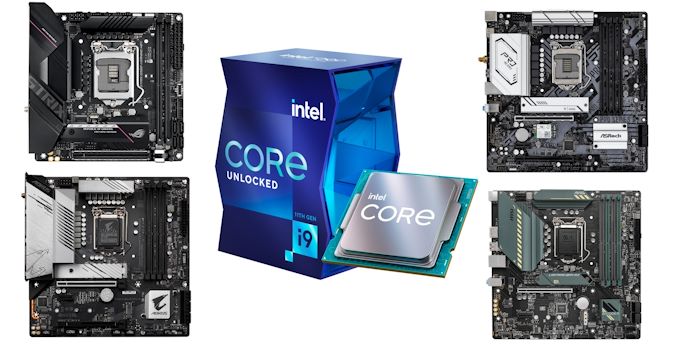
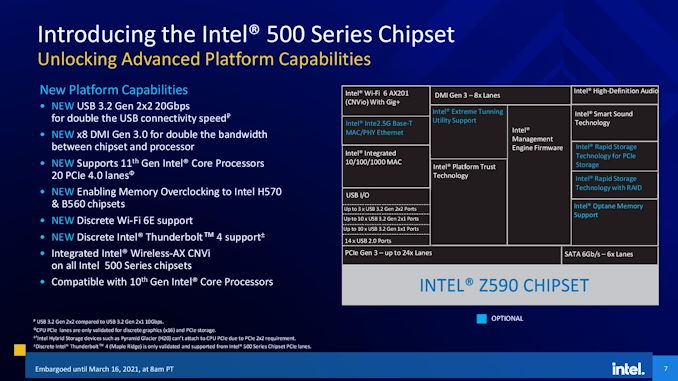
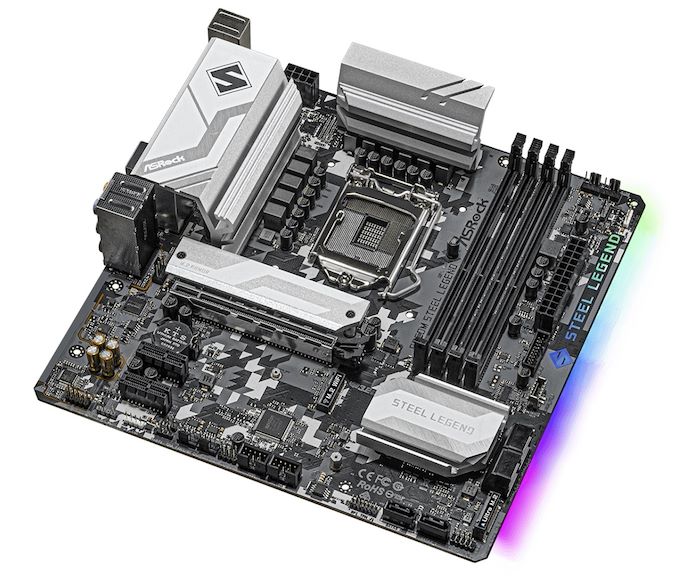
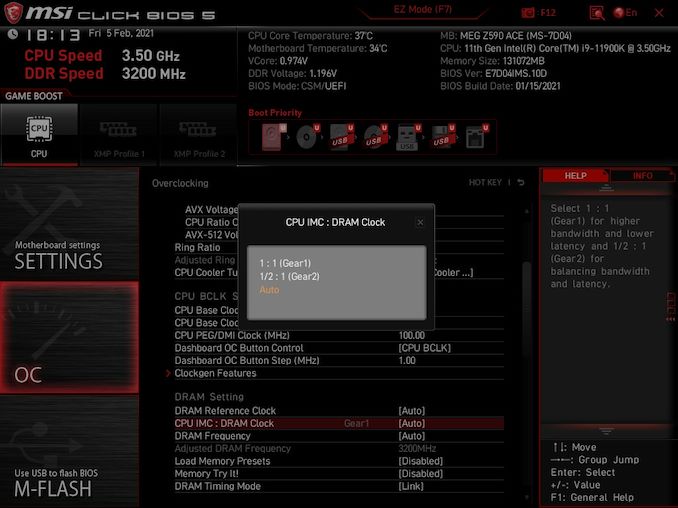
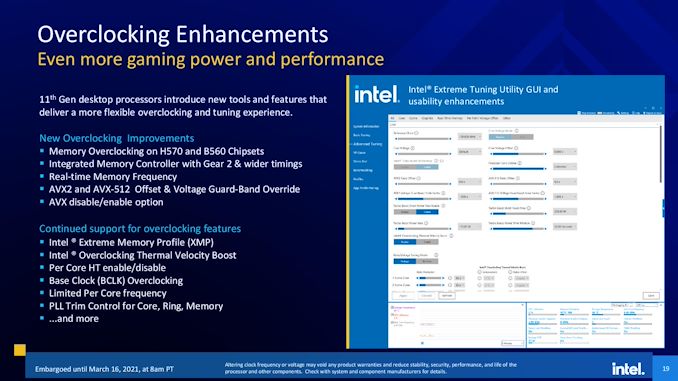








279 Comments
View All Comments
Qasar - Tuesday, March 30, 2021 - link
nope zen 3, they are waiting for the ryzen 5000 series to be in stock, and once they do, they will upgrade, some were looking at 5600X or 5800X, but now, might move up a tier vs what they would of picked up if they were in stock from day one.Tomatotech - Tuesday, March 30, 2021 - link
Is there a problem with your keyboard? It doesn’t seem able to type the word ‘shit’ properly. Seems a common problem with American keyboards.Holliday75 - Tuesday, March 30, 2021 - link
I have an American keyboard.Shit.
Works for me.
ImSteevin - Tuesday, March 30, 2021 - link
AMD got used to fighting hard with reduced resources and Intel got used to being comfy at the top. Bought AMD at $13, always believed in the real MVP.SaturnusDK - Wednesday, March 31, 2021 - link
I bought AMD shares when they hit the $2 mark. I usually do that when any tech stock hits $2 and I have some spare cash, and then keep it for a minimum of a year. In 2016 it was AMD .Last year it was Kodak.JayNor - Tuesday, March 30, 2021 - link
"AMD is the top dog and intel cannot even catch up...."Intel is already sampling 16 core 24 thread Alder Lake chips ... pcie5, ddr5, new cores. They showed a desktop running it at CES. When will AMD catch up with these features?
SkyBill40 - Tuesday, March 30, 2021 - link
Intel couldn't get 10nm on desktop, yet we're supposed to believe that they're suddenly going to pull a magic rabbit out of a hat tomorrow? Hardly. By the time Intel gets around to having a worthwhile process on something other than 14nm, AMD will be on 5nm. They're almost there as is.16/24? Why bother with that when AMD has 16/32 NOW? While it may not have PCI-E5 or DDR5, it doesn't need it but will likely have it soon enough. AMD catch up? Come on, man. AMD is in FRONT and has been for a while now. It's all about Intel getting it together and trying to close the gap they themselves created due to complacency, mismanagement, and underestimating their opponent.
Qasar - Tuesday, March 30, 2021 - link
jaynor, i think that will be Zen 4, for the most part, its intel that has caught up to AMD with its features. and um if you haven't noticed even with a release bios, microcode etc, looks like rocket lake is still the dud AT shows it was turning out to be a couple of weeks ago.Hifihedgehog - Tuesday, March 30, 2021 - link
> Intel is already sampling 16 core 24 threadLOL. 16 cores and 32 threads of full fat Zen cores is ALWAYS better than 8 cores and 16 threads of full fat Core cores and 8 cores and 8 threads of garbage tier Atom cores.
flgt - Tuesday, March 30, 2021 - link
Yeah, that seems like a mobile first design which will be “good enough” for corporate desktops. Seems like Intel is giving up on the desktop enthusiast market.